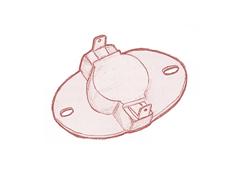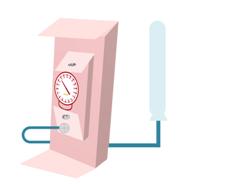All modern solar thermal systems use these bits of equipment. Thermostats control individual parts of the system, although they're not used to control the main flow through a solar loop. Unions are the joins in the piping.
 Snap Disc Thermostats
Snap Disc Thermostats
These are cheap, basic thermostats which snap onto the system and switch on or off at a preset temperature. Although they're cheap and simple, they are a very bad choice for a solar thermal installation. You should avoid using them because they're not adjustable, they're not very durable and they're not very accurate.
 Aquastats
Aquastats
A far better choice of thermostat for solar thermal systems in the aquastat: it's adjustable, it's more durable and it's more accurate than a snap disc thermostat. As you would expect, it's also more expensive, but the investment is worthwhile.
Aquastats work by using a thermal couple sensor. The sensor is included either in a strap that fastens to the outside of the water pipe or in a small copper tube (a "remote bulb") connected to the aquastat.
Whichever model is used, the aquastat creates a tiny electric current at the sensor – a millivoltage – which changes depending on the system temperature. You can set specific temperatures at which the aquastat switches on or off, and also a temperature differential, which gives the required additional flexibility and control.
These are simply pipe joins, used wherever pipes are attached to each other in a circuit. They allow maintenance without having to cut the pipes. Solar thermal systems use unions on all the collectors' nipples and either side of any critical parts of the solar loop, such as around the pumps, the tanks and the heat exchanger.
Always choose solid brass unions with high-temperature O-rings or gaskets.
The exception to this rule is where connections are made to the storage tank(s). In this case, you should opt for "dielectric" unions. These have a gasket and washer made of rubber and plastic, which electrically isolates the two sides of the join, thus preventing any galvanic reaction between the copper (your pipes) and steel (your tank). This significantly prolongs the life of your solar thermal installation.